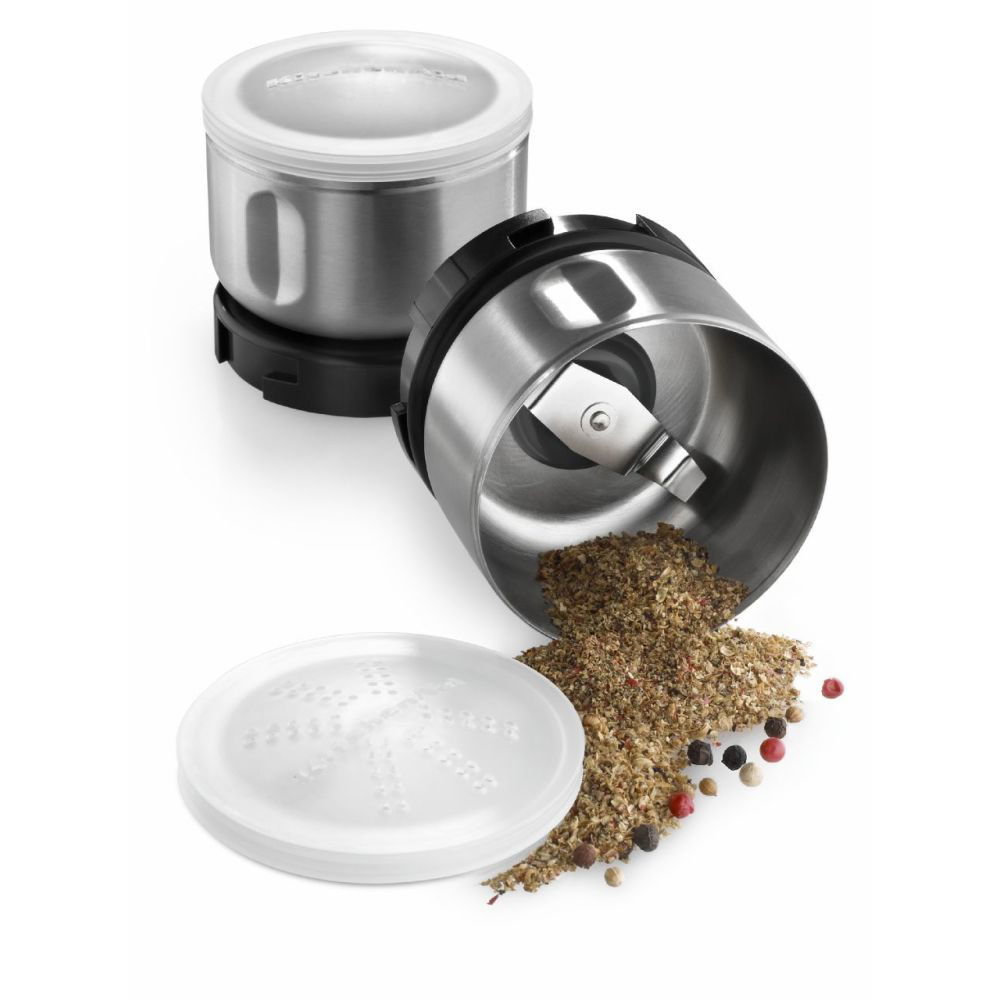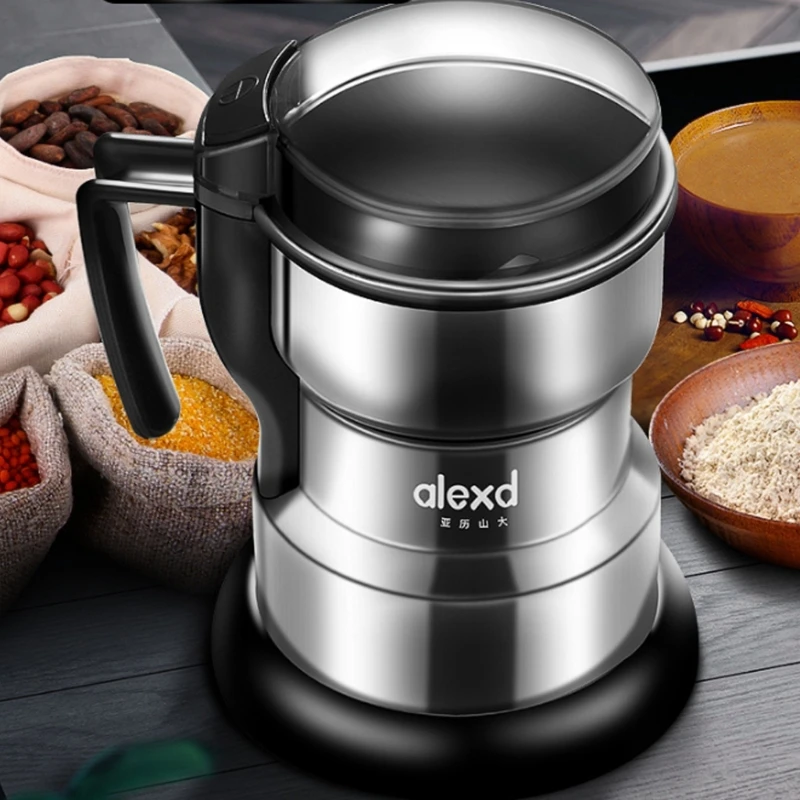Can you use a coffee grinder for spices? Coffee enthusiasts might know all the ins and outs of grinding coffee beans. But did you know that your coffee grinder can pull double duty in the spice cabinet? Using a coffee grinder to grind spices could revolutionize your culinary experience. This article delves into the intricacies of using a coffee grinder for spices, the advantages and challenges, and some thoughtful tips on maximizing its use.
Why Use a Coffee Grinder for Spices?
Convenience at Your Fingertips
One of the most compelling reasons to use a coffee grinder for spices is convenience. Most households already have a coffee grinder at hand, which makes it a readily available tool for spice grinding. Instead of acquiring a separate spice grinder, you can double the functionality of an existing appliance. This means one less gadget on your kitchen counter or in your cupboards.
Moreover, a coffee grinder simplifies the process of grinding spices. Grinding spices manually using a mortar and pestle can be time-consuming and labor-intensive. With a coffee grinder, you can achieve the same results in a matter of seconds. This is particularly helpful when preparing complex dishes that require multiple ground spices. The convenience offered by a coffee grinder makes it a valuable addition to your kitchen repertoire.
Precision Grinding
A good cup of coffee requires the right grind, and the same principle applies to spices. Coffee grinders offer precision that manual grinding cannot achieve. This precision is particularly valuable for spices like cinnamon, nutmeg, or pepper. A fine grind can release essential oils that enhance the flavor of your dishes. On the other hand, a coarser grind might be better suited for rubs and marinades. The adjustable settings on many coffee grinders give you the flexibility to choose the texture you need.
The evenness of the grind is another major advantage. Uneven grinding can result in a mix of powdery and chunky bits, which may affect the consistency and taste of your food. An electric coffee grinder ensures that your spices are uniformly ground, providing a balanced and consistent flavor profile. This precision can elevate your cooking, making each dish a masterpiece of its own.

Specific Spices That Benefit from Grinding
Cardamom and Cloves
Cardamom and cloves have strong, aromatic flavors that can enhance both sweet and savory recipes. These spices are often sold in whole form and need to be ground before use. A coffee grinder can efficiently break down their tough structures, releasing their full aroma and flavor. For instance, freshly ground cardamom is far superior to its pre-ground counterpart. It’s richer and more aromatic, significantly elevating your chai tea or curry dishes.
Grinding cloves in a coffee grinder also offers benefits. Cloves have a hard texture that can be challenging to grind manually. However, the robust nature of coffee grinders handles these effortlessly. The finely ground clove powder is excellent for spicing up a variety of recipes. From holiday cookies to spicy meat rubs, freshly ground cloves add a punch that pre-ground options simply cannot match.
Cinnamon and Nutmeg
Cinnamon and nutmeg are ubiquitous in desserts but also feature in savory dishes. Freshly ground cinnamon has a potency that is lost in pre-ground varieties. When you grind cinnamon sticks in a coffee grinder, you unleash aromatic oils that enhance your recipes. Be it in cinnamon rolls or spiced meat, fresh cinnamon elevates the overall flavor. The convenience and precision of a coffee grinder make this task simple and efficient.
Nutmeg is another spice that benefits from a fresh grind. Pre-ground nutmeg tends to lose its aromatic qualities over time. By grinding nutmeg in your coffee grinder, you preserve its essential oils, offering a richer and fresher flavor. From holiday eggnog to savory béchamel sauce, freshly ground nutmeg adds a delightful depth. Thus, using a coffee grinder for these spices ensures that your dishes are bursting with flavor.

The Challenges of Using a Coffee Grinder for Spices
Cross-Contamination
One of the main challenges is cross-contamination of flavors. Grinding coffee beans and spices in the same grinder without proper cleaning may lead to unwanted mixtures of flavors. Your morning coffee might end up tasting like last night’s curry. Some robust spices, like cumin or cloves, have potent, lingering scents that can be difficult to clean out entirely. To mitigate this, you might consider keeping separate grinders—one for coffee and one for spices.
Some coffee grinders come with detachable components that are easier to clean. After grinding spices, you can disassemble the grinder and wash it thoroughly to remove any residual flavors. Another method is to grind a small amount of uncooked rice afterward, which helps to absorb and remove leftover spice particles. However, these cleaning methods might not be foolproof, and some flavors could still linger.
Durability Concerns
Another issue is the wear and tear on your coffee grinder. Coffee grinders are designed to handle coffee beans, not necessarily the harder textures of some spices. Over time, grinding tough spices like cloves or nutmeg can dull the blades, affecting their efficiency. This could shorten the lifespan of your grinder and require more frequent replacements. If you use your grinder predominantly for coffee, this might be a significant concern.
While many grinders are built to be durable, they may not be covered under warranty if used for non-coffee purposes. It’s essential to consult the manufacturer’s guidelines before using your coffee grinder for spices. Some grinders are more robust and can handle dual purposes without significant degradation. Researching the grinder’s specifications and limitations can save you potential frustration and costs down the line.

Tips for Optimizing Your Coffee Grinder for Spice Grinding
Cleaning Methods
Cleaning is paramount to prevent cross-contamination. One effective method is to grind a small amount of uncooked white rice. This can help absorb oils and powder residue from the previously ground spices. Run the grinder until the rice turns into a fine powder, then discard it. Repeat this process until the grinder is clean. This is especially useful when switching between very different types of spices or between spices and coffee.
Additionally, removable parts should be washed thoroughly with soap and water. Ensure they are completely dry before reassembling the grinder. Moisture can affect the performance of electric grinders and could cause spice clumps. Some users swear by using a small brush to clean out tiny crevices where spice particles may linger. Always consult the manual for any appliance-specific cleaning instructions to avoid damage.
Different Grind Settings
Most coffee grinders come with adjustable settings. Learning to use these settings can help you achieve the perfect grind for your spices. For instance, a coarse grind may be ideal for creating a spice rub, while a fine grind is better for baking needs. Understanding these settings can make your grinder more versatile. Try experimenting with different settings to see which work best for the different spices you use.
It’s also important to be mindful of the grinder’s capacity. Overloading it can result in uneven grinding and strain the motor. Smaller batches are usually more effective and ensure a consistent grind. Knowing the limits of your grinder can help in achieving the best results without damaging your appliance. Using this versatile tool effectively can unlock new dimensions in your culinary exploits.
Maintenance and Care
Regular Maintenance
Regular maintenance is crucial for the longevity of your coffee grinder. Even when only used for coffee, the grinder needs regular cleaning to perform optimally. When doubling as a spice grinder, this becomes even more essential. Frequent use of hard spices can dull the blades and clog the system. Check and clean the blades and interior regularly to ensure peak performance.
Periodic blade sharpening or replacement is also recommended. Some grinders allow you to replace the blades yourself, while others may require professional servicing. Keeping an eye on the grinder’s performance can help you identify when maintenance is needed. If grinding becomes inefficient or the motor struggles, it’s time to take action. Proactive maintenance can extend the lifespan of your device and keep it functioning effectively for both coffee and spices.
Storage Tips
Proper storage of your grinder can prevent potential issues. Moisture and humidity can affect electrical components and promote rust on blades. Store your grinder in a dry, cool place to avoid these problems. If possible, keep it in a designated cabinet or shelf away from the stove or sink. This minimizes the risk of accidental spills or exposure to high moisture levels.
Additionally, when not in use, unplug the grinder. This simple step can prevent accidental activation and prolong the motor’s lifespan. When storing removable parts, ensure they are clean and dry. Proper storage ensures that your grinder is always ready for its next use, whether for coffee or spices. These careful practices can make a significant difference in maintaining your grinder’s longevity.
Conclusion
Using a coffee grinder for spices offers numerous advantages, from convenience to precision and versatility. However, it also presents some challenges like cross-contamination and potential wear on the device. By applying thoughtful cleaning methods, experimenting with grind settings, and maintaining the grinder properly, you can optimize its use. Whether it’s for delicately grinding cinnamon or creating a robust pepper mix, a coffee grinder can be a valuable asset in your kitchen. With a little attention to detail, you can enjoy flavorful, aromatic spices in all your culinary creations.
